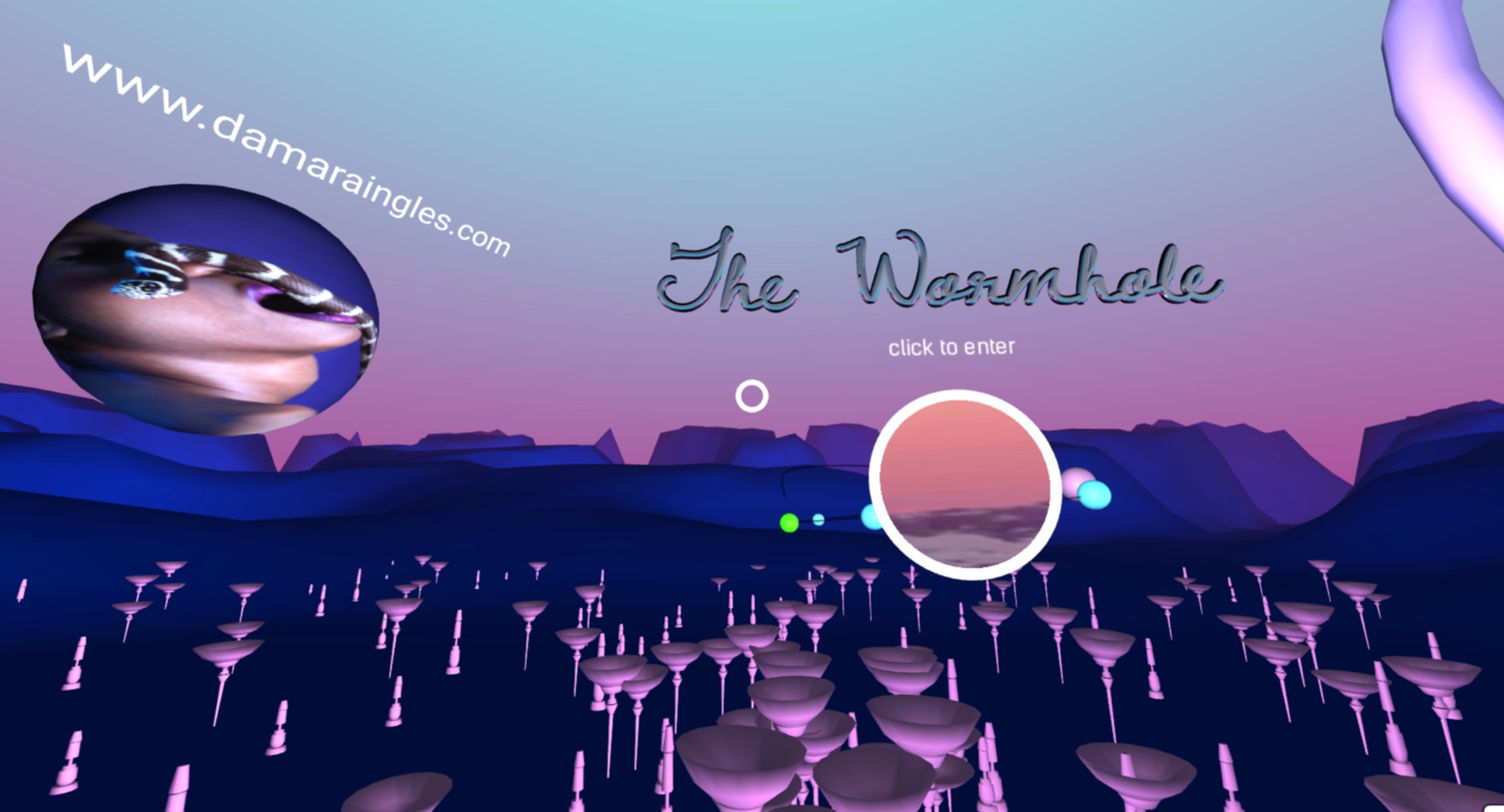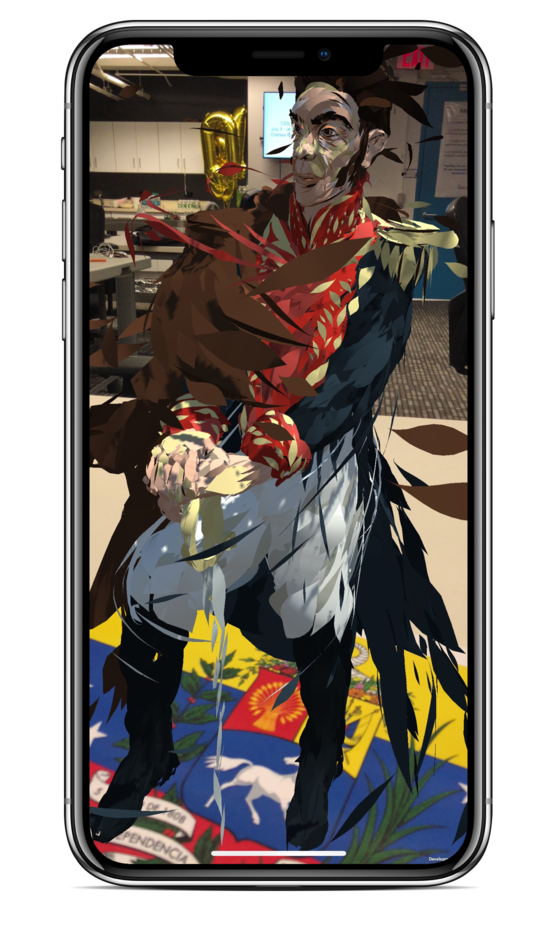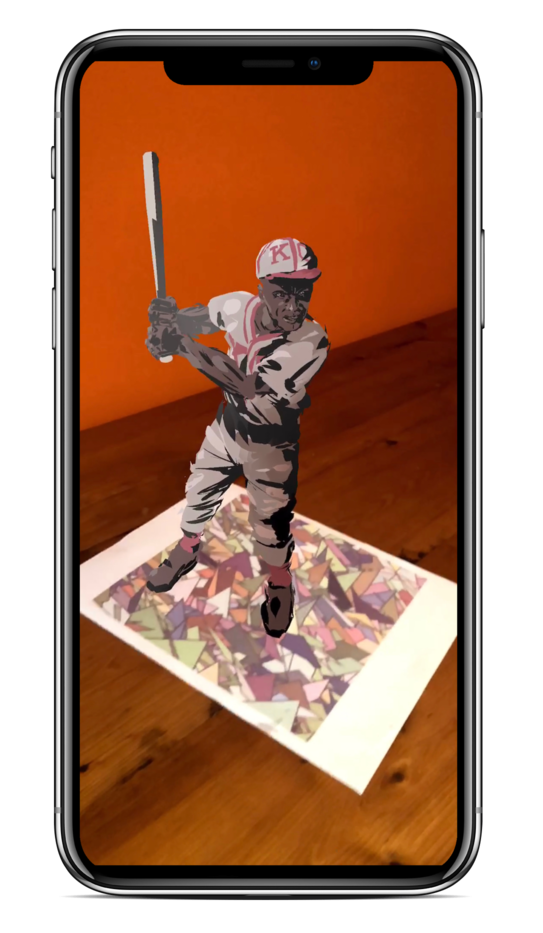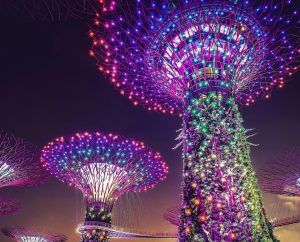The Wørmhole is a project meant to inspire, inform, and provide tools for creatives interested in new technologies. The main creators of this project are Maria Cristina Sega and Gina Josephine, two young researchers and creative technologists. Their work, which combines cultural insight with new technologies, is designed to have a social impact. Maria Cristina Sega is the owner of Cisor Studio — a female-led, future-thinking creative studio — and works part time at VIRTUE, the creative agency by VICE.
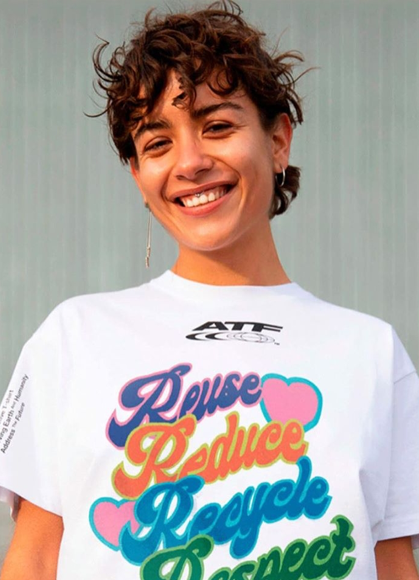
Maria Cristina discussed with us how new technologies are impacting societies and how they might evolve in the future. Her strong passion and interdisciplinary knowledge is reflected in The Wørmhole, a website born to provide creatives who are fascinated by new technologies — but who are, at the same time, afraid of tapping into them because they think it is too difficult — a resource to overcome their bias. The project could potentially help people understand the newest technologies and the issues around them.
The Wørmhole is a VR website that can be also viewed as an interactive desktop website. It consists of two sections:
The first is a virtual exhibition space where a different digital artist is showcased every month. This section was developed using A-frame, an open-source web framework for building VR experiences that allows developers to create 3D and WebVR scenes using HTML.
The second is a platform of highly curated content, meant as a resource for creatives to refer to when learning and art directing. This platform is a fun introduction to new technologies, that requires no previous knowledge. It is divided into three categories: technologies, inspiration and resources. Technologies allow users to learn about different technologies at a beginner’s level and how they can be applied across industries. Inspiration is for art directors and creatives who want to outsource the creation of digital content. Finally, Resources — the most advanced category — is for those who want to develop or expand their practice. Some recurring themes in this category are privacy issues, data policies, ethics and governance, and inclusive design.
The Wørmhole database will be updated constantly. Do you think you are an interesting case? Cisor is open for submissions at mariacristina@cisorstudio.com

Do you look for specific styles or themes with the artists and projects you exhibit?
Yeah for sure. We really believe in representation and we really care about representing artists that are part of any kind of minorities. This was part of our manifesto when we started Cisor. The first girl we are showcasing now Damara Inglês, a Fashion Media practitioner and Curator of Digital and Interactive Experiences. Her creative work focuses on blurring the binary of physical/material and virtual/digital, and on how the digital identity is ever more crucial to the contemporary sense of self.
Do you have a tight network you can rely on to find fantastic artists who haven’t been discovered yet, or do you use other tools?
Network definitely plays a big role, but it’s also important to try to tap out of your “bubble” and expand your knowledge, connections, and interactions outside of that bubble. Social Media is becoming more of a mirror room where you see your own beliefs and values being reflected through the algorithm. You have to spend a large amount of time looking for something different. I use Social Media as a tool, but I also use cultural platforms and magazines, which are all in The Wørmhole. If I find an interesting article showcasing an artist, I am drawn to the writer and I look through everything they write.
How do you not get lost?
I do get lost! That’s the problem. It took me six months to put together The Wørmhole, which is still not final. Every time I think it’s ready, I find three more things to add.
You wanted to create this page as a future oriented web experience, can you tell me a bit about what that is?
With anything we do in Cisor, we do not only deliver a product, we want to create a universe with a purpose. This reflects in webdesign as well. To me it’s breaking out of the norm of simple, static web pages. I think users get a more valuable experience when they can interact with the page and when storytelling is used in that process. Call it Next Gen UX: I think there are a lot of designers who are already moving towards that direction and thinking about how they can push the experience even further.
If this change of direction is already apparent to you, how do you think the web experience is going to evolve in the future, in the next decade or two?
I think we will move away from what we know as the screen today. I think AR will penetrate and become mainstream quite soon, within the next ten years. We will start designing for AR through glasses; I think the hardware will catch up with all the software, and everything will be stored in the Cloud. 5G is coming up really soon which means we will have a way stronger connection.
This is scary since we already have a big data surveillance problem and everything we do online is recorded and used for profiling us. Besides, I am really concerned about the consequences 5G will have on our health. In an appeal to the EU, 180 scientists and doctors from 36 countries warn about the danger of fifth generation.
Today we have a lot of VR technologies that people are experimenting with, but not as much AR. It feels like VR is getting more attention than AR. Is that so?
I think VR had its “fifteen minutes of fame” when everyone tapped into it. For me, AR, or at least mixed reality, will materialise so much faster because it’s accessible. VR goggles are heavy and impractical. Of course the experience VR gives you is way crazier, but it’s just not a day-to-day tool to use, at least for now. If you count Facebook developing Spark AR, which is an accessible platform for creating SoMe AR experiences, I would say AR is the most mainstream new technology today.
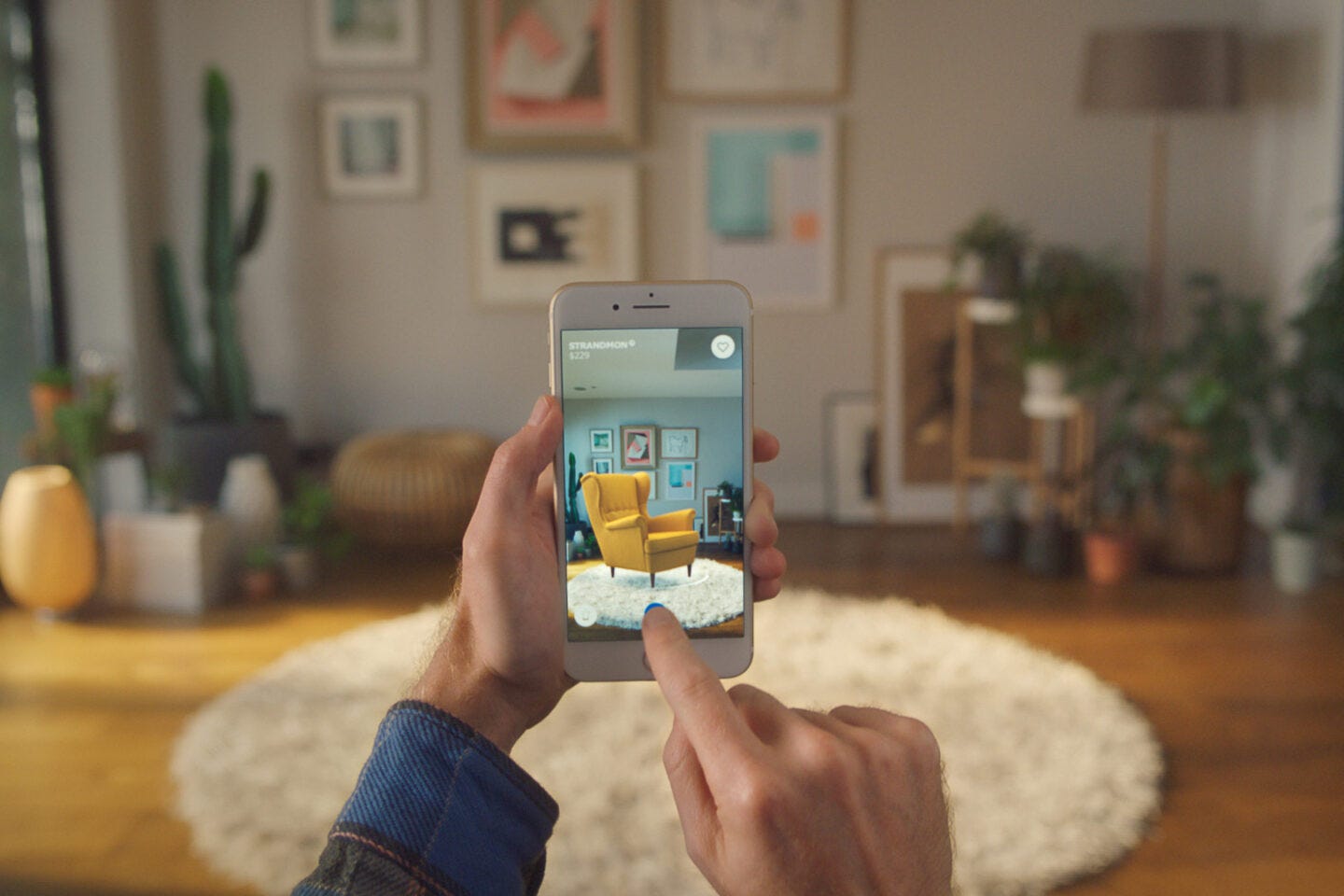
Some companies do have AR apps. In the IKEA app for example, you can place objects and furniture in the environment. Do you think there are fields or industries that aren’t using AR now but that will use it in the future?
Yeah, I think AR will be used in so many industries — production, value chain, transportation, medicine, health care, tourism. Some companies are looking into it, but it’s also a matter of return on investment, and, unfortunately, leaders and decision makers tend to get stuck in never ending hierarchies and bureaucracy when looking at implementing future oriented changes in their companies.
Most of the time, AR experiences are directed at consumers, but some industries use AR for B2B. I’ve talked a lot with people in the value chain production and fashion industry, especially after the corona pandemic; international companies can’t showcase their pieces to their retailers anymore, so they need virtual experiences to show them. With that said, I think the coronavirus has pushed many companies to think about moving more into progressive technologies, giving them the confidence to do so and understanding the importance of it.
This is surely one of the more beneficial results of the pandemic. Many also said that the pandemic has brought people together, because people started connecting more (virtually). Before, we were relying more on texts or we would video call once in a while, whereas during the pandemic, people started to video call more, seeking a face-to-face way of communication. Doesn’t this raise an accessibility problem? This way of communicating relies so much on being connected through a device, which has to be modern enough and have a good enough Internet connection. Doesn’t this become a problem for some minorities or isolated communities?
Exactly. We shouldn’t just focus on advancing technologies. When designing for these experiences, it’s vital to focus on inclusivity and finding ways to reach out to everyone and provide accessible experiences. Today, 1.7 billion adults globally remain outside of the financial system with no access to a traditional bank, even though one billion have a mobile phone, and nearly half a billion have internet access [source].
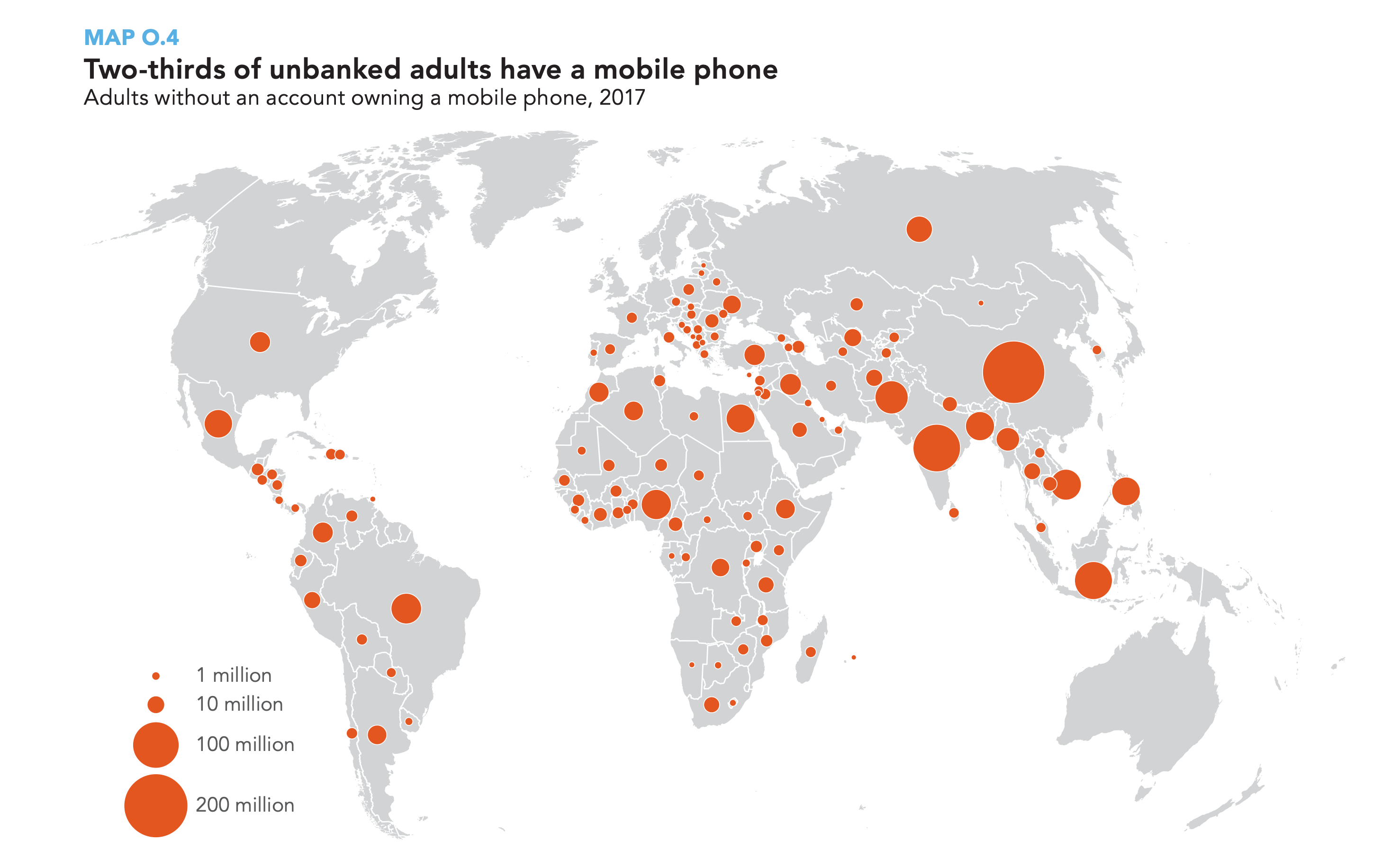
Let’s imagine that AR becomes mainstream in richer societies but not in some parts of the world where the tools or the means to access these technologies are missing. Do you think this technological advancement would create an even bigger disparity?
This has already started happening. This topic leads to a huge conversation about technology being part of the capitalist system and being used by tech companies for profit. Technology isn’t just technology; it entails companies, money, society, culture. Surely, this will create an even bigger gap because that’s just how the Western world works right now. But I also hope that the more accessible technology will become, the more people, who are not necessarily happy about being part of these big structures and who are educating themselves, will try to create designs and services that bridge that gap. I believe this is more possible now, rather than ten or twenty years ago, because at that time you had to be an expert and have the right infrastructures to create certain kinds of services. Today Youtube is the best school you can ever attend.
In The Wørmhole, the resources you list focus on open source software. Why?
I’m such a big believer in open source software. It’s a digital reflection of some really good values; communities coming together to create and help each other make a better product, not for profit. But in a way it does end up profiting them because they develop something that everyone can use and keep updating, and in the end attract big investors. Open source is also accessible to people who don’t have the means to purchase expensive software.
How do you think the technology we have today is impacting our social life?
Technology has made our life way more convenient, and our life span and life quality has increased because of it. We are also more connected, which means we can create a more positive impact with the tools we have.
Today’s technology has made us more physically isolated, despite being more virtually connected. Communities are becoming more segregated. We have also seen our data being used in presidential campaigns, and succeeding. This is a product of surveillance capitalism. Tech companies make money by creating this algorithm and selling the products that would fit you best. It’s not only products, it’s also beliefs, such as an opinion on a presidential candidate and who you should vote for.
Is there any platform that you think is a good alternative to what we are fed with today? Is there a good alternative to social media?
There are tools you can use to protect yourself from the algorithm. For example, there is an extension on Chrome for Facebook that tries to break the algorithm and not remember your actions. But you should also take action while on social media and try to expand your circle. I don’t believe that you’ll manage to completely avoid getting the same results, even if you actively work to try to fool the algorithm. That’s why you should pick up a book or have a conversation with someone who you think is totally different from you. Expose yourself, both on social media, and in real life situations.
China is even planning to rank all its citizens based on their “social credit” by the end of this year. In this system people can be rewarded or punished according to their behavior. This is one way governments can control people.
This is the most fascinating part for me: the link between culture and technology. I think in China and Asia in general, technology is perceived in a completely different way to Europe. Plus China has an authoritarian government. Personal freedom already didn’t exist before technological advancements. It’s scary to think how technology can be used this way.
There are cases in which technology impacts society positively. For instance, some countries like Korea have handled the coronavirus crisis with technology in an incredibly efficient way, but with the government totally obstructing privacy citizen issues. I’m generally against governments that don’t care about people’s privacy, but there are two sides to every story. I think that Westerners should try to acknowledge that we have a bias towards other cultures and governments created by our own media. I’m sure that if you were from those countries or if you had lived there for a couple of years, you would understand the problems in much more depth and understand where things come from. I’m not trying to defend it, I am saying we get filtered information. Try to have diversity in your sources and, if you can, read sources in multiple languages.
You also want to give people a voice and fight against systemic oppression with your AR experiences or in general new AR technologies. Can you name a practical example?
There will be one soon, it’s the project I’m currently working on. I can’t really reveal too much, but in general I can say that intentionality is fundamental when you design something to create social impact. Trying to give people a voice is different from tokenism and using that for your own interests. There’s an organization in the USA, Movers and Shakers, that has built an AR app that, as you go around the city, replaces some monuments and statues of people who were perpetuators of slavery with people in the black community, activists, women, and queer people. This was made one or two years ago, and it is interesting to see what’s happening now during BLM with these statues being thrown in the rivers.

